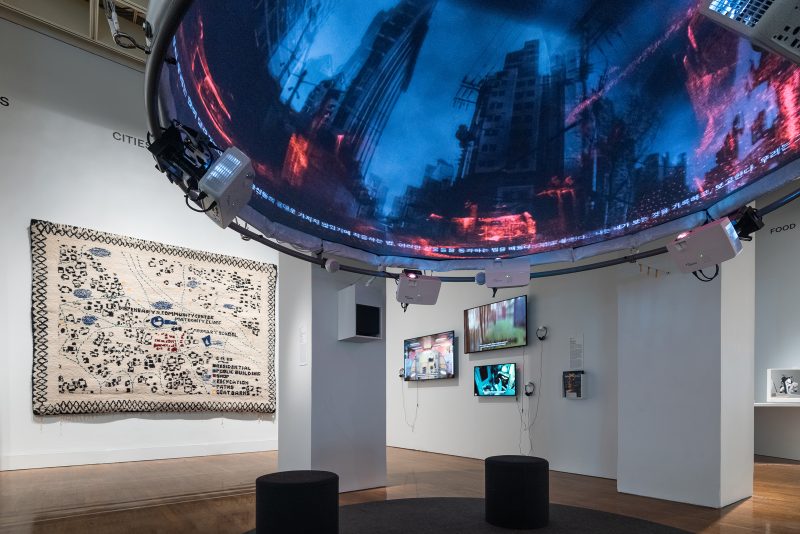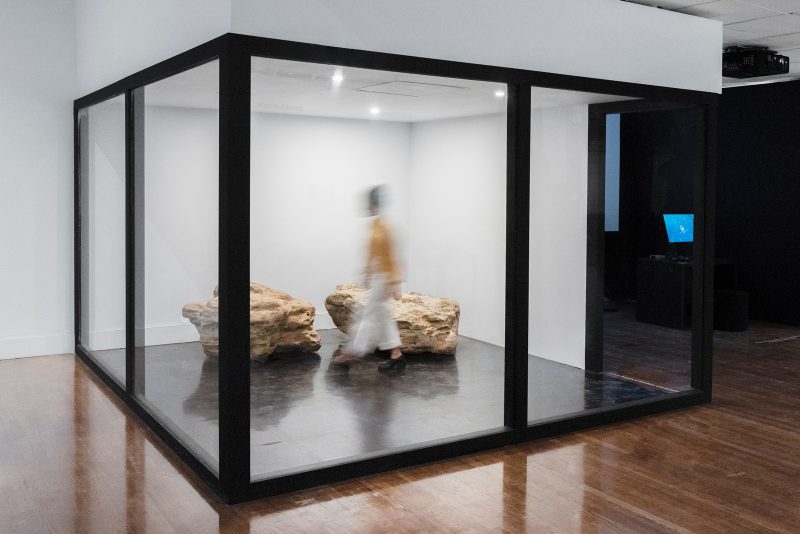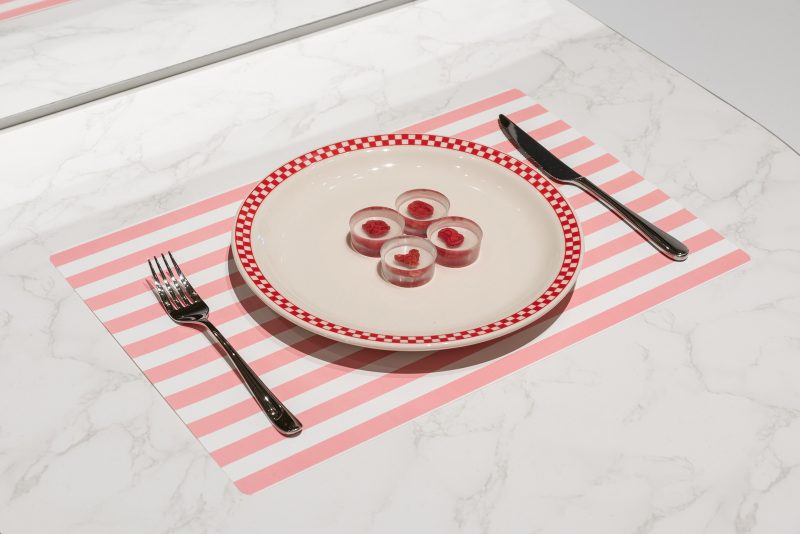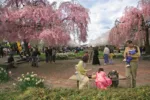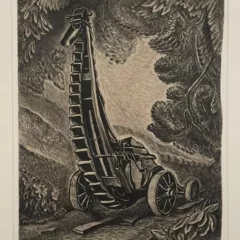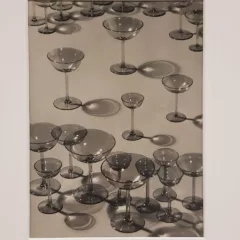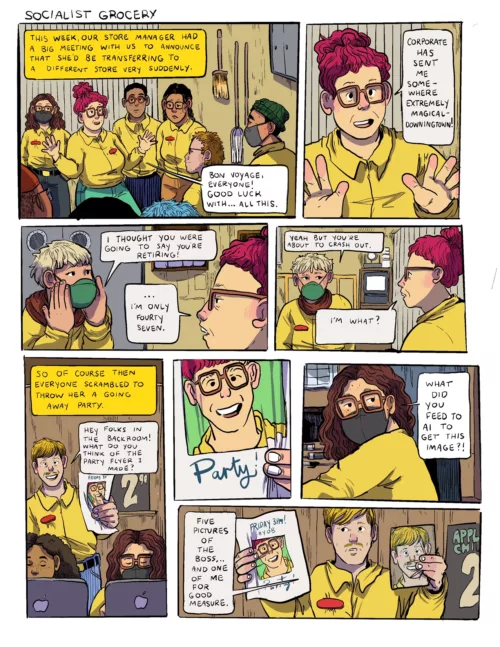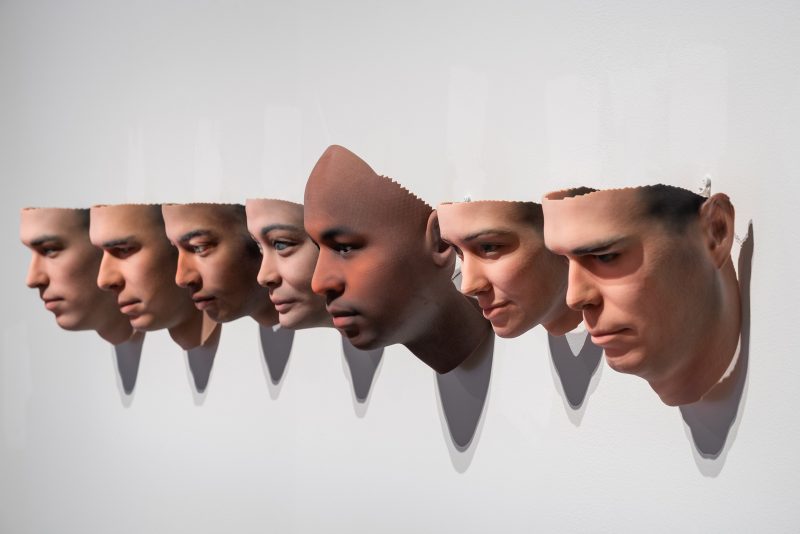
In a city widely known as an Afrofuturist epicenter, where the exploration of the collusion between science and technology with art, music and literature have long been a significant part of Philadelphia’s cosmic and lived-in make-up, it’s only natural that futurists of all stripes would want to set up camp here. After all, “space is the place”–Sun Ra’s more intense, transformative moments have occurred here; communities have thrived here with quasi-independent economic, social and scholastic self-determination; organizations like MOVE, though polarizing, have created holistic alternatives as an example of speculative imagination lived.
With that as the backdrop, yet perhaps unknowingly, the Philadelphia Museum of Art hosts Designs for Different Futures (DfDF), an immersive, interactive gathering of genius work that explores life at the intersection of technology–from textiles, to medicine, to food, to surveillance, to architecture and beyond–with art and speculative creativity. The works are heavily curated, presenting a kinetic tactility for many of the displays, a far cry from the cordoned off “don’t touch” typical of museums. DfDF is a show tucked behind the often garish modern art it shares the museum with–Twombly’s, DuChamp’s, Mondrian’s, all comfortably behind glass and analyzed ad nauseum. Many of the works in Different Futures though often beg to be touched, listened to, experienced–there is actual signage encouraging such. Sure, there are inaccessible displays such as the textiles section’s Iris Van Harpen’s organic couture invoking “bad guys from Mockingjay” vibes for instance, but there are also electronic vending machines where one can buy and sell personalities. The scope of Different Futures, in fact, may be a bit overwhelming.
From the entrance, ethereal sounds from droning videos, detached monotone robotic voices and the sound of pneumatic chambers pushing air around create an atmosphere not unlike a bazaar in a cyberpunk film, but in the staid confines of the museum the constant buzz-and-whir feels more Gattaca than Blade Runner. While the primary concerns for DfDF are scarcity and surveillance, displays often overreach in their ambition. In “Alien Nation: Parade O”, drab identity conformity is offered as a solution to racism and discrimination. It can be discerned from the piece that when we all look the same, uniformity erases conflict. Uniforms are presented as practical gear for the revolution, invoking Communism and Italian Futurism. It’s not entirely clear if this is a pastiche, but what is presented is a revolution through the masking of identities, through erasure. Often with DfDF, erasure is the name of the game. Though the artists, scientists and speculators come from places as far-reaching as Scandinavia, Germany, Iran, and Asia, there is scarcely any Black or African-diasporic presence. This omission is glaring, especially considering Philadelphia is home to movements like Black Quantum Futurism, a collective of Black women whose work tirelessly marries practical science, quantum physics, and science fiction with community art and activism. As BQF’s founder, attorney and sci-fi writer Rasheedah Phillips puts it, the erasure of Black influence at DfDF is “literal violence, stealing, extraction” and a “colonization of the future.” Rasheedah’s work, and countless others of the African diaspora, would have fit so well here among the androids, sustainable insect farms, and anti-surveillance technology that it is a shame that, while DfDF accompanying interactive art therapy section Futures Therapy Lab bares a striking resemblance to BQF’s established Community Futures Lab, that this inclusion wasn’t a part of the prescribed formula for DfDF.
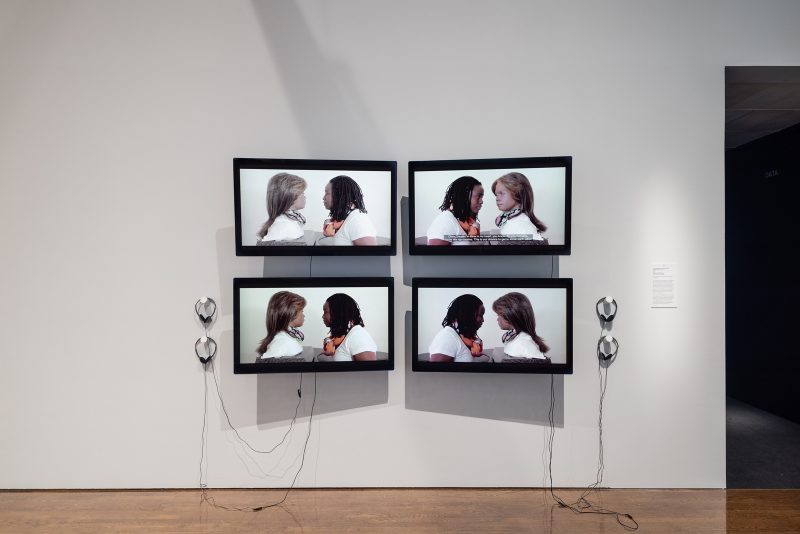
There’s a video demonstration of Bina 48, an android designed to resemble a Black woman. There’s beautiful sci-fi dreaming produced by of Olalekan Jeyifous and Wale Lawal in the form of animated films where images flicker by in traditional Nigerian color palettes, yet somehow still heavily mired in a predictable dystopian grunge. But among all the displays here, the scant few that do represent global Black art and innovation aren’t enough. One of the few other representations of blackness, though a stretch to call it that, is via “Synthesizing Obama”, a piece that uses the former president to “prove” media manipulation is a thing. The application is used to aid in lip-reading for disabled people, but for “Synthesizing,” the commentary suggests that there is something ominous happening in technology that feels inescapable. Based on the reactions to the museum goers I shared space with, it’s possible to think that we are inviting it. The irony that, in a room filled with technological wonders, I overheard viewers interacting with a robot designed to interface with and mimic the viewers movement as they chided the robot for being “too slow,” was stout. The idea that we expect a future that moves at the speed of our thoughts is both frightening and wondrous.
The questions posed by DfDF in its own introductory video are about the control of information, about gender, about sustainable food, environment, and clothing. There’s even a question about the intelligence and capabilities of robots. Yet, there aren’t any questions about preserving cultures, about marginalized people being viewed as human, particularly Black and Indigenous peoples.
While writers and innovators like myself, Ariell Johnson of Amalgam Comics, Warren Longmire via Blue Stoop, and Chef Omar Tate certainly provide Black perspective during DfDF‘s “Sci-Fi Sundays” series (where artists and authors read their favorite passages from science fiction), this presence feels fleeting. There is little permanence, not much by way of persistent visible Black inclusion in the main room. Perhaps the inventive electronics work of Kelvin Doe aka DJ Focus, Detroit’s Equitable Internet Initiative group that builds free and accessible internet for poor people through innovation, or Texan Moses West who builds machines that create water from thin air, along with locals like fashion designer like Noél Puéllo who uses found materials to create elegant, futuristic works of wearable art and Ras Mashramani and their work with creating technologies and practices dealing with mental health as Deep Space Mind, would have fit comfortably in DfDF. As it presently stands, the exhibit is certainly genius. In “Intimate Stranges” by Andres Jaque, gay dating app Grindr (the very first dating app, the piece reminds us) describes locative queer male existence as being both liberating and a part of the surveillance state. It’s a fascinating inclusion; the sexually self-determined nature of the piece certainly made museum-goers uncomfortable. I found myself, once flanked by about six people, alone staring at the screen and the three cellphones playing the same images facing said screen, as the narrator discussed how online avatarship was simultaneously helping queer men reinvent themselves while creating a void where cruising spots, clubs, bars and other gay spaces experienced severe downturn in patronage because of the immediacy online cruising provides. The subjects, of course, were white. As well, there is a fascinating, living building, a bulbous structure that lives and breathes and changes based on the temperature and the environment, “Another Generosity” by Finnish designer Eero Lunden. The idea is that buildings in the future will work with the environment and not actively against it and perhaps that the nature of the building being “alive” will intuitively invite empathy from the humans who use or dwell in them. The question, though, is who will have access to these structures? Does the exclusion of a viable presence at this exhibit for Black people answer that question definitively?
Despite my weariness and unease at the lack of African diaspora representation, it’s easy to see that the collected work here is staggering. Nearly all of it certainly belongs. It is a must-see display, as are the accompanying events and the therapy labs. Perhaps others will have these same questions and the curators will proceed with mindfulness of the dangers of exclusion in future curating. The future, after all, will be forged, shaped, and made real by all of us–art and speculation should wholly reflect that.
Designs for Different Futures, Philadelphia Museum of Art, October 22, 2019– March 8, 2020
More Photos
